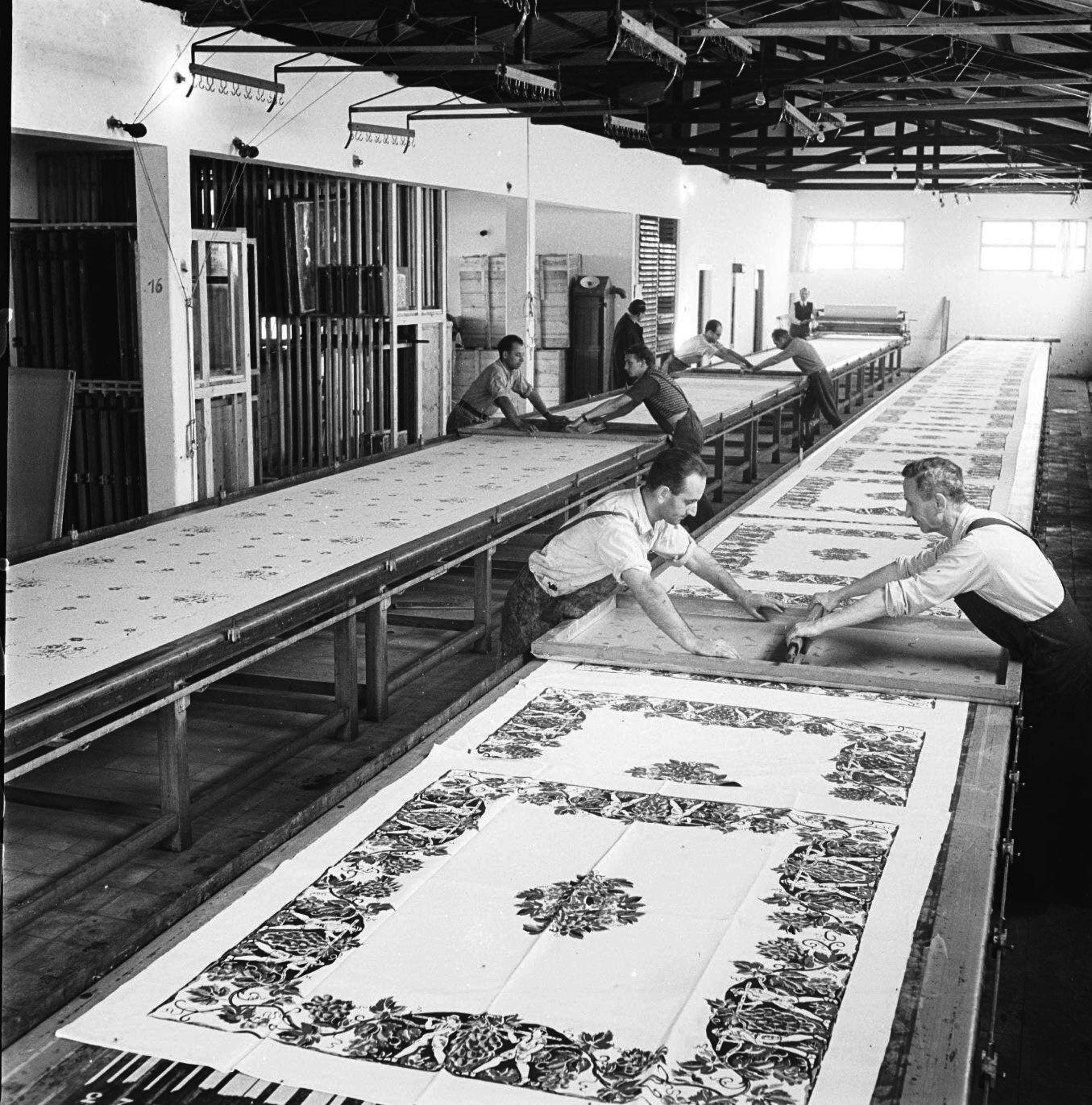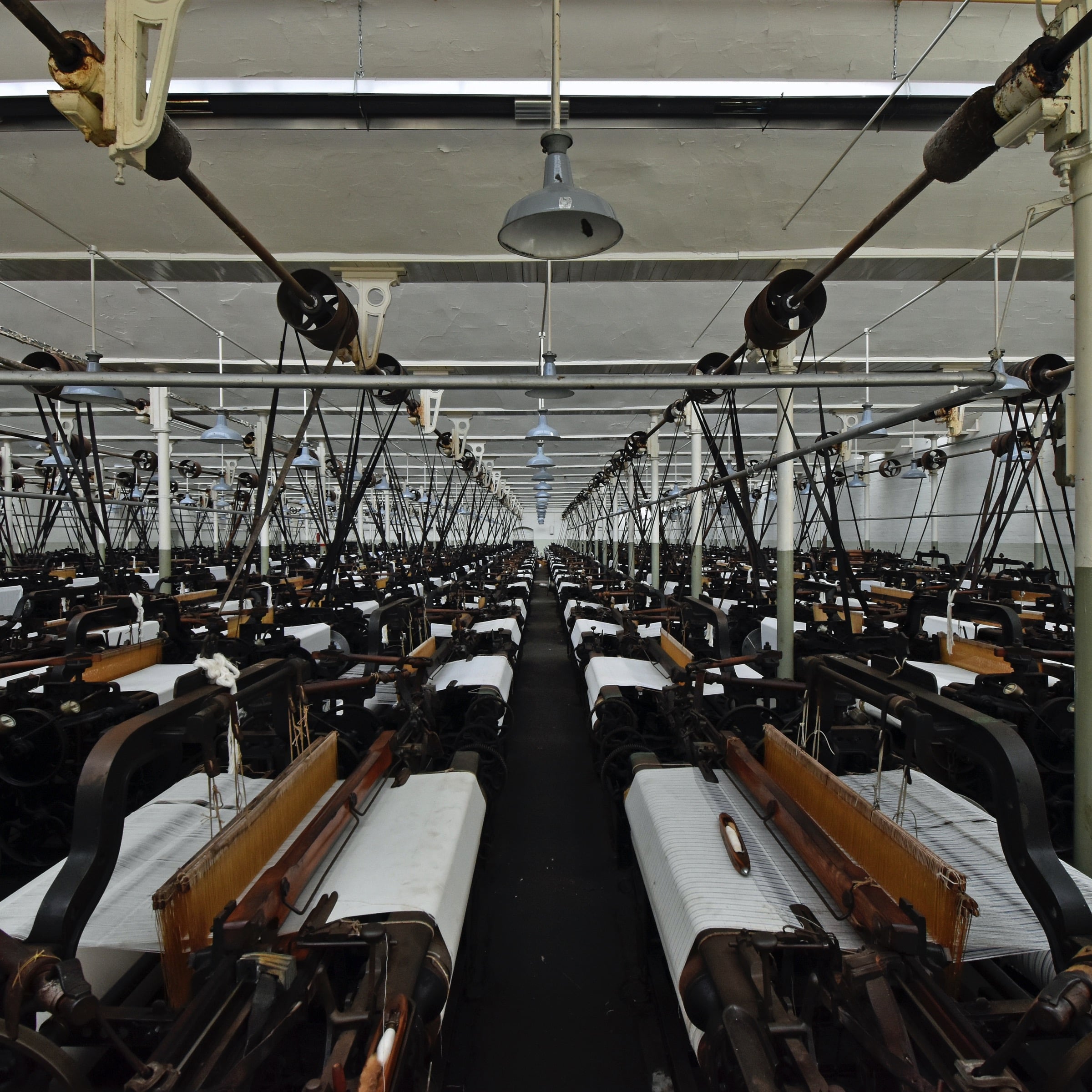For those who don’t know, Germany is not only the birthplace of modern Western printing with Gutenberg’s sheet-fed press around 1454, but it also proved to be a major player in cloth printing from 1760, thanks to Christophe-Philippe Oberkampf.
Born into a family of dyers from Wiesenbach, Oberkampf is the descendant of a line of Lutheran dyers from Württemberg. He learned the trade from his father, established in Aarau in Switzerland as a manufacturer of printed fabrics, the Indians, then went to Basel to the producers of Indians (Indians).
In 1756, at the age of 18, the young Oberkampf acquired his independence and entered the Koechlin and Dollfus printing factory in Mulhouse as an engraver. In October 1758, he went to Paris and hired himself as a colorist in the Indian workshops of the manufacturer Cottin installed at the Arsenal.
When this industry became legal in France on November 9, 1759, he proposed to the Swiss of King Louis XVI, Antoine Guernes, known as “Tavannes”, to join forces with him for the creation, in Jouy-en-Josas, of a factory of Indians. The first canvases were printed on May 1, 1760 and met with success, allowing Oberkampf to expand his factory in 1764 on a vast plot of 18,000 m2. The workforce of the factory grew rapidly and reached 900 workers in 1774. His only partner, from 1762 to 1790, was Sarrasin de Maraise, whose wife, Marie-Catherine-Renée, née Darcel, kept the accounts of the factory.
In August 1770, justifying ten years of residence in France, Oberkampf and his brother are naturalized French. At the same time, the wooden boards were replaced by copper plates, also engraved, but flexible, which could be attached to cylindrical drums. This important technical development, due to his nephew Samuel Widmer, will allow the company to considerably increase its production and enter the era of mechanization.

Royal Manufacture
In 1783, the factory received from King Louis XVI the title of royal factory and in 1787, Oberkampf, ennobled by letter of merit in 1787, received from the king the title of squire as well as the right to have coats of arms and a motto Recte et vigilanter (uprightness and vigilance). Its factory produced at that time about 30,000 pieces per year and mobilized 800 workers.
The reform of the departments and municipalities by the Revolution led him to be appointed, on February 7, 1790, mayor of Jouy-en-Josas. On 26 Fructidor Year III, Oberkampf acquired the former royal farm of Bouviers in Guyancourt, in order to control the quality of the waters of the Bièvre whose source is on the land of this farm. He also opened a branch in the town of Essonnes, on the Essonne river.
The factory remained flourishing during the Revolution and became the country’s second largest company after the Saint-Gobain glass factory. From 1805, the trade declined and the workforce, which had reached 1,600 workers, had to be reduced. In 1816, 550 workers were employed by the Oberkampf company.
In 1806, Oberkampf obtained the first class gold medal at the exhibition of industrial products at the Louvre for his eminent role in the manufacture of painted canvas. On June 20, 1806, during a visit to the workshops, Napoleon awarded him the Legion of Honor.
Decline
Again in 1815, the drop in demand and competition made themselves felt. The workforce fell to 435, before the factory temporarily closed during the invasion of the allied armies against the Emperor. When Oberkampf died in 1815, the factory was entrusted to his nephew Samuel Widmer. On his death in 1821, one of his sons, Émile Oberkampf, went into partnership with Barbet de Jouy, then handed over the buildings to him completely in 1822. The manufacture, specializing in high-end products, could not resist the competition and finally went bankrupt, closing its doors in 1843.
Source: https://fr.wikipedia.org/wiki/Christophe-Philippe_Oberkampf
However, apart from Gutenberg and Oberkampf, we should not forget the very inventor of sublimation, the engineer Noël de Plasse. But that will happen much later. Let’s jump forward a hundred years and see what the innovations in terms of printing technologies are…
Transfer printing, an innovation of the 1960s
In 1957, the engineer Noël de Plasse experimented with the sublimation of certain dyes (transition from the solid state to the gaseous state) and invented transfer printing. The image to be reproduced is printed on a paper support, then applied to the textile and heat-fixed. This method is compatible with most synthetic textiles.

In 1965, transfer printing was adopted by the Prouvost and Masurel spinning mill, which registered the technique under the name of Sublistatic.
The 1970s: the history of printing enters the digital age
From 1975, computers opened up new paths for the textile printing industry. Digital printing can be applied to digital printing (inkjet) or to transfer printing and makes it possible to reproduce all kinds of images by four-color process, with an unlimited number of colors. Initially reserved for thick products (rugs, etc.), it has been used since the end of the 1990s to print small series in clothing or furniture, as well as for sampling or personalization.
At the time of ecological balance sheets, digital printing appears to be a textile printing solution that requires less resources and less pollution than screen printing processes.
Source: https://textileaddict.me/lhistoire-de-limpression-textile/